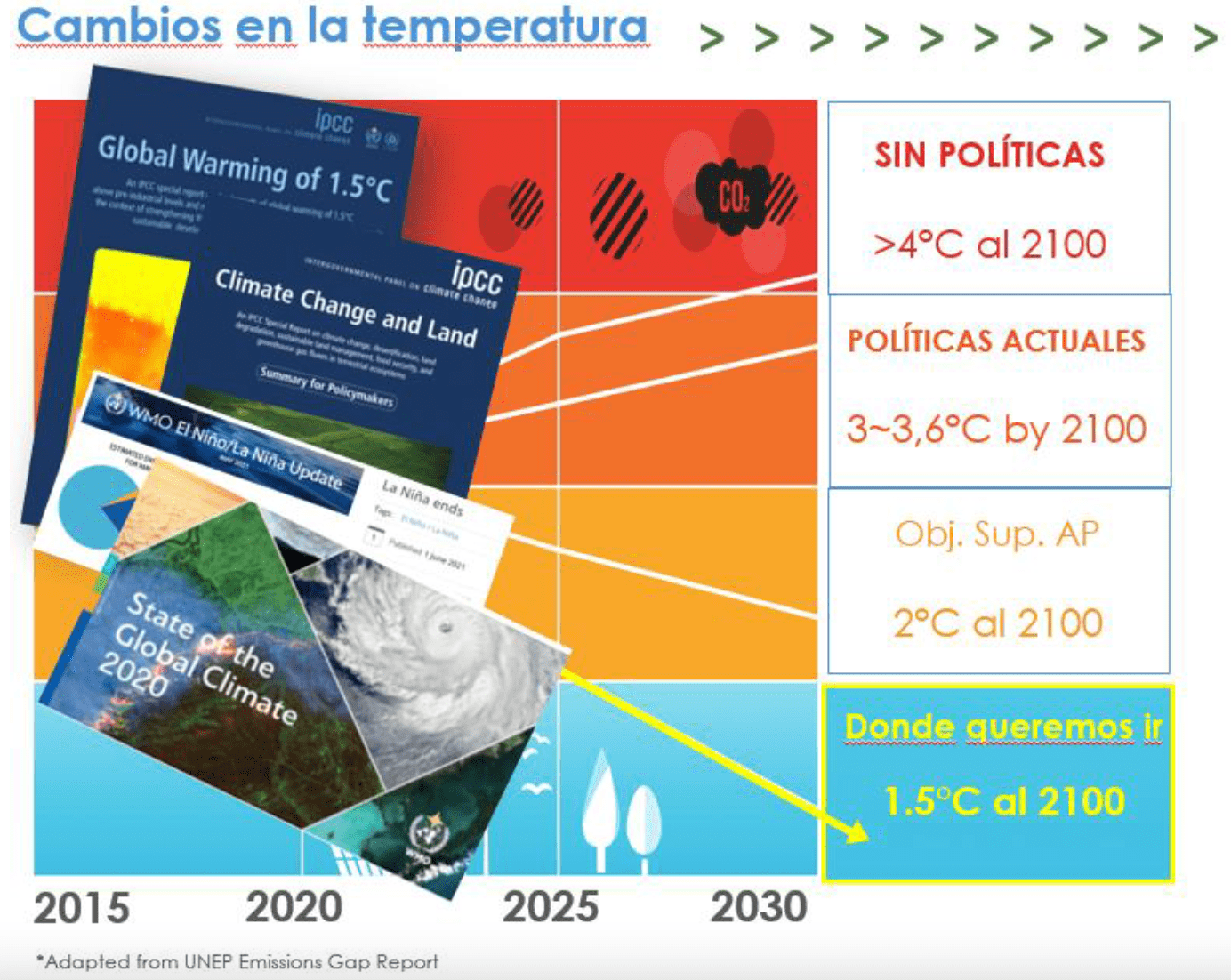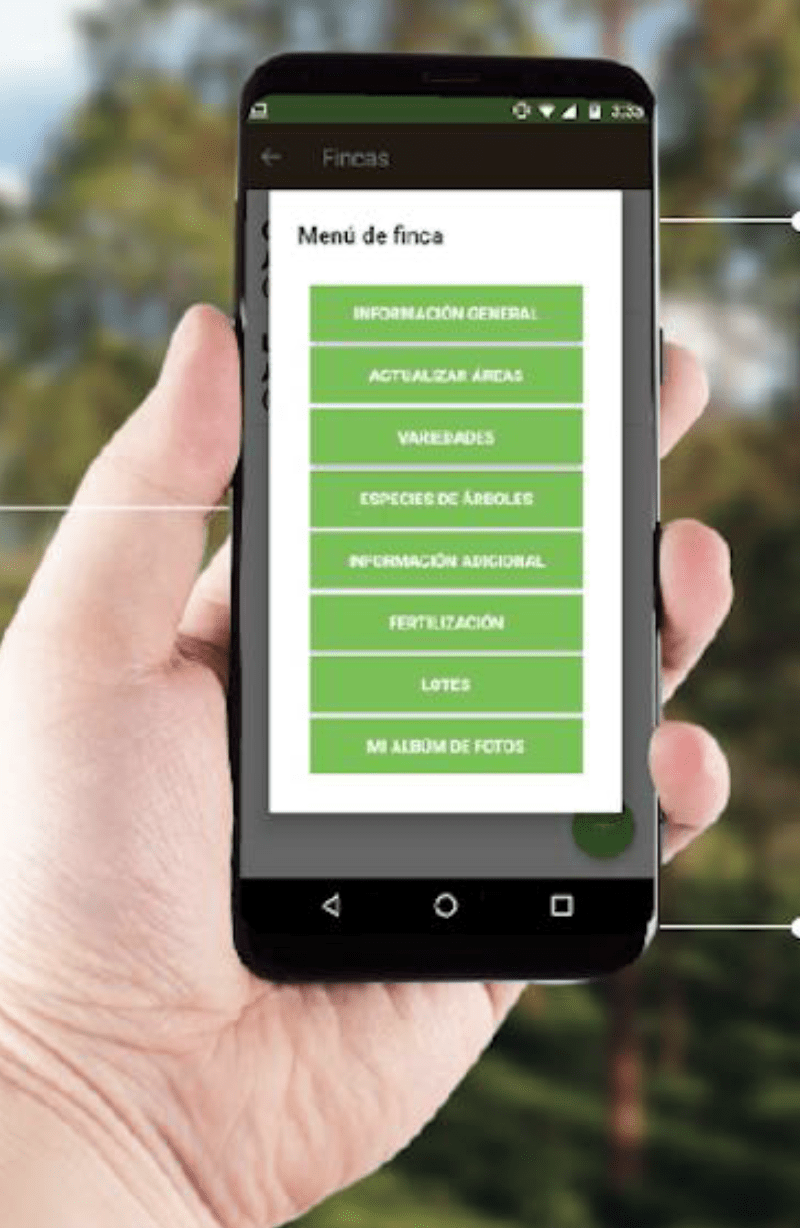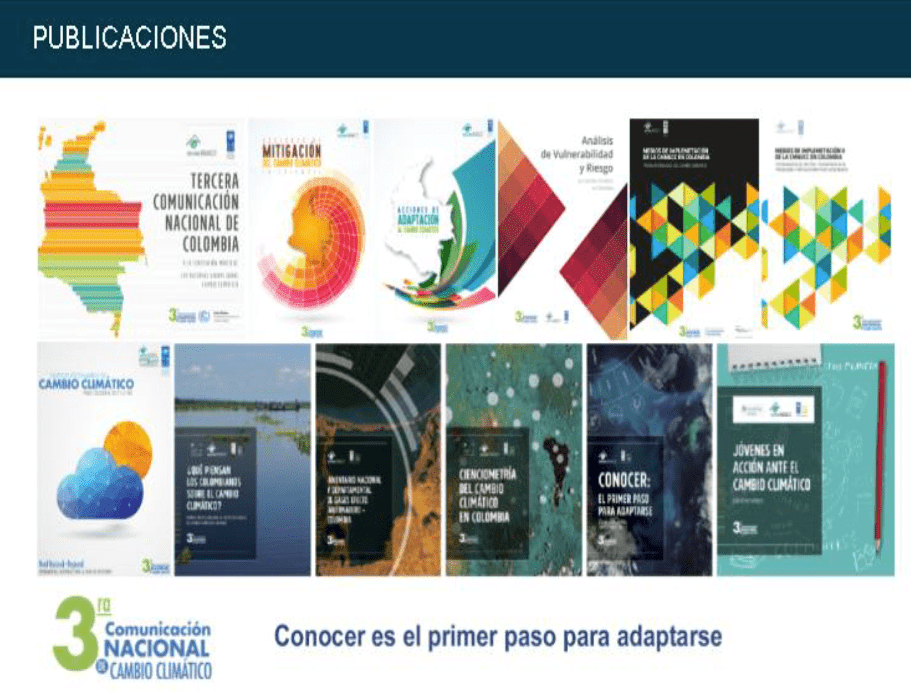A discussion on transparency highlights the importance of linking the local producer level with monitoring systems at sectoral and national levels.
Several countries, 10 June 2021 – The virtual conversation "Monitoring, Reporting and Transparency: “Ambition and opportunities for articulated climate action between national, sectoral and local levels from the perspective of the agri-food sector" brought together key actors from the agricultural sector with three panellists on the issue at international, national and sectoral levels.
Experiences, tools and best practices in the development of monitoring and data verification systems were presented as essential support in national communications and reporting on Nationally Determined Contributions (NDCs) on the path towards the Enhanced Transparency Framework.
The agrifood sector in Latin American countries both contributes to global warming and is vulnerable to its effects. Some countries have only recently integrated it into their NDCs and are willing to strengthen climate actions to reduce the vulnerability of the population dependent on family farming with low-carbon measures.
The big challenge now is to have systems in place to monitor and evaluate adaptation contributions and to monitor, report and verify mitigation contributions in order to verify the climate ambition formulated in the NDCs and to ensure transparency in national communications and reporting on the scope of the NDCs.
The Enhanced Transparency Framework (ETF) is the set of rules for countries to report on their progress in implementing their commitments under the Paris Agreement that improves the current measurement, reporting and verification reporting requirements under the United Nations Framework Convention on Climate Change (UNFCCC). The ETF specifies how countries should report on progress in climate change mitigation, adaptation measures and support provided or received. It also establishes international procedures for the review of submitted reports. The information gathered through the ETF will feed into the global assessment, which will evaluate the collective progress of all countries towards long-term climate goals.
The agri-food sector in Latin America and its importance for raising the ambition of the NDCs
The event began with the intervention of Carlos Ruiz-Garvia, regional head of the UNFCCC Regional Collaborating Centre for Latin America in Panama, who addressed issues related to climate ambition, the contribution of the agri-food sector in Latin America in increasing this ambition and the countries' management instruments such as national plans and their corresponding Nationally Determined Contributions (NDCs). From the office of the UNFCCC Regional Collaborating Centre for Latin America, Ruiz-Garvia said that support is given to countries in the region on complying with the Paris Agreement, facilitating the tasks of implementation and reporting for NDCs and, in this regard, the migration towards the Enhanced Transparency Framework.
In terms of climate ambition and the sense of urgency, data such as that in the United Nations Environment Programme's (UNEP) Emissions Gap Report 2020 or the Intergovernmental Panel on Climate Change's (IPCC) 2018 Global Warming Report of 1,5ºC of the Intergovernmental Panel on Climate Change (IPCC, 2018) show that between no implementation and adequate implementation of climate change policies and measures, the difference can be as much as 4ºC to 1. 5ºC of global warming. "The cost of inaction is too high," he said.
The data also show that agriculture, at a global level, and more specifically the AFOLU sector (agriculture, forestry and other land uses), has a direct impact on sustainable development at a global level on two fronts: contribution to GHG emissions at 23%; and contribution as a mechanism for absorbing atmospheric emissions with 31%. In the South American region, agriculture accounts for 13% in Central America and up to 20% in the South.

Changes in la temperature, presentation of Carlos Ruiz-Garvia
On the other hand, Ruiz-Garvia continued, if the Paris Agreement scheme provides for long-term planning, it is the countries' NDCs that reflect their climate ambitions in the short term, with the understanding that this ambition must increase in crescendo. In this context, and given that it is in 2020 that the formal accounting of data under the Agreement begins, and the transition to a strengthened transparency framework is important in order to confirm that globally we are moving in the right direction.

Emissions in Agriculture
The UNFCCC Secretariat is monitoring progress in delivering NDCs - in the Latin American region, only 3 of the 17 expected NDCs were delivered by December 2020. The NDC Initial Synthesis Report (UNCCC, 2021) makes it clear that governments are far from meeting their commitments to reduce emissions 45% by 2030 and to zero by 2050. From this previous round of analysis it is also clear that the agriculture sector is very important, as 86% of NDCs have related activities.
"We will work to support countries' governance to accompany the transition to the Enhanced Transparency Framework," Ruiz-Garvia concluded with these final messages:
- It is important to take advantage of opportunities offered by the climate package (COP25) in terms of means of implementation, financial support, capacity building and the transition to new technologies, which in the case of agriculture facilitate the absorption of emissions.
- This must be reflected in increased ambition. NDCs provide our greatest opportunity for positive, systemic change (adaptation, mitigation, finance) that is resilient, productive and healthy for present and future generations. We also need to see ambition at the non-governmental level: private sector (forestry, agriculture, transport, energy, waste, industry, etc.).
- Governance and transparency must be strengthened. NDCs must follow legitimate, participatory and long-term multi-sectoral processes - with "tangible" results through Monitoring, Reporting and Verification (MRV). Funding has been based on national needs and development.
Measurement, Reporting, Verification (MRV): a decision-making tool for the Costa Rican coffee sector
Gustavo André Jiménez, deputy executive director of the Costa Rican Coffee Institute (ICAFE Costa Rica), explained the usefulness of Measurement, Reporting and Verification (MRV) for greenhouse gas emissions in the entire chain, from the producer, to the exporter, to the consumer, to the citizen and to the government, and how, for it to work well, each actor must feel involved in a win-win relationship.
To do so, it started with how an appropriate MRV system has fed into the development of a Nationally Appropriate Mitigation Action (NAMA) for the coffee sub-sector in Costa Rica. The process was initiated in 2012 by a group of people in the Coffee Region of Los Santos, who developed Greenhouse Gas (GHG) measurement proposals that were presented at the UNFCCC Conferences of the Parties (CoPs) in 2011 and 2012, leading to the first agricultural NAMA shortly thereafter.
A preparatory phase was supported by the Multilateral Investment Fund of the Inter-American Development Bank and in a second phase, advice was received from German Cooperation, through the German Society for International Cooperation - GIZ, to implement the NAMA Café Costa Rica project with financial support from the NAMA Facility, supplemented by the German Federal Ministry for the Environment, Nature Conservation and Nuclear Safety (BMU) and the Department of Business, Energy and Industrial Strategy (BEIS) of the United Kingdom. These completed projects have contributed to the completion of Costa Rica's National Low Emission Coffee Strategy.
In the process, members of more than 60 coffee mills were trained and the carbon footprint of more than 7,000 producers was quantified. The learning, according to Jiménez, is that it is not only necessary to have the best metric, but also to take into account the interests of the producer, who becomes not only a supplier, but also a user of data. "If you ask for data, you have to return the effort," Jimenez said. For example, thanks to the information provided, it is understood that it is not just fertilisers that are the biggest emitters of GHGs, but coffee pulp, which allows more sources of emissions to be considered. In return, producers get information on how to better position their coffee or obtain greater efficiency in the use of agrochemicals.
Today, in the digital age, this exchange has become even more evident. The CR-CAFE mobile app collects data such as disease monitoring, the cost-benefit of fertiliser use and the environmental impact of fertiliser use. It processes and returns results to farmers and extension agents to support them in their decision-making. The application also contributes to involving new generations with less experience in coffee crop management. During the effect of the COVID pandemic, the use of the tool skyrocketed and made it easier to provide extension services at a distance.

Aplicación móvil CR-CAFE recolecta, procesay devuelve resultados a productores y extensionistas para apoyarlos en la toma de decisiones. Presentación de Gustavo Jimenez
In the process of developing an MRV system, there are no recipes, but there are some recommendations:
- Understand who the clients of these metrics are. Map actors and roles.
- Learn about the purpose and usefulness of these metrics, their scope and the steps to be taken to implement actions for their collection and analysis.
- Seek additional MRV applications beyond the decision-making tool for different clients and support local appropriation.
In Costa Rica, Jimenez concluded, producers are already finding this value, not only because it is a requirement in quality controls, but also because in international markets the coffee product is gaining in value.
A national initiative: SIIVRA, the Integrated Information System on Vulnerability, Risk and Adaptation in Colombia.
Ivon Maritza Casallas Martínez presented the design of this vulnerability, risk and adaptation monitoring system at the national level, coordinated by the Institute of Hydrology, Meteorology and Environmental Studies (IDEAM), the technical arm of the Colombian Ministry of Environment. The SIIVRA is an information system that seeks to articulate, make data available and demonstrate trends through periodic reports that serve as input for analysis on vulnerability, risk and adaptation to climate variability and climate change, so that it can be incorporated into territorial and sectoral planning processes. The SIIVR

Presentation of Ivon Casallas
The development of this software tool was based on the concept of risk definition published by the IPCC in its 5th Assessment Report (AR5). In this sense, the complex interaction between hazard, vulnerability and climate risk in a defined territory was taken into account, based on eight dimensions: biodiversity and ecosystem services, water resources, food security and agricultural production, human health, human habitat, infrastructure, disaster risk and cultural heritage. From this, 127 indicators are derived from which vulnerability (the result of sensitivity and adaptive capacity), hazard and risk indices are constructed. The process was accompanied by inter-institutional exchanges to verify and socialise the tool.
A practical example of the use of this tool, Casallas said, can be found in the reports submitted to the Ministry of Agriculture and Rural Development's Agricultural and Livestock Planning Unit (UPRA), which identify variables, indications and indices associated with different types of crops. This information makes it easier to discern which crops would be the most representative to suffer risks of losses due to the effects of climate change within the country's economy. It must now generate more experience with the implementation of the system.
By the end of 2020, SIIVRA has been linked as a target of the updated NDCs. And in the coming years, predictably 2030, "the country will have an Integrated Information System on Vulnerability, Risk and Adaptation to Climate Change (SIIVRA), which will allow monitoring and evaluating adaptation to climate change in Colombia, linked to the National Climate Change Information System (SNICC)," Casallas concluded.
Closing conclusions
A question-and-answer session with the panellists led to some final conclusions.
- The concept of climate ambition is linked to indicators that limit the increase in GHG emissions to 45% by 2030 and reducing global warming to 1.5°C by 2050. In this way, each country determines and interprets which commitments best suit national circumstances to meet the Paris Agreement.
- The Enhanced Transparency Framework provides tools for reporting on climate action to guide political decision-making and encourage greater ambition in countries' commitments.
- The Monitoring, Reporting and Verification, system not only provides information on the annual status of GHG emissions, but also becomes a management tool to improve the profitability of production systems.
- Vulnerability, Risk and Adaptation monitoring in the agri-food sector is highly complex, integrating a multivariate analysis with social, economic, (bio-)physical and environmental variables, both qualitative and quantitative. Its reports are important for decision making on the sub-sectors most at risk.
- A robust monitoring system requires a clear conceptual framework that responds to the dynamics of the territory, data availability and clarity of information. For the data to be useful to the information system, it is necessary to identify who will be the user, i.e. the client of the information, and to involve them in the circuit of generating, processing and using the data.
These conclusions closed the Monitoring and Transparency: ambition and opportunities for climate action articulated between the national, sectoral and local levels from the perspective of the agri-food sector discussion with an invitation to participants to a subsequent meeting on 9 September, which will address the impact of the agri-food sector on public policies.

The three panellists for the Discussion: Carlos Ruiz-Garvia, Gustavo Jimenez, Ivón Casillas
About the virtual chat series
In 2021, the Resilient Food Production sector of the EUROCLIMA+ programme is launching a cycle of four virtual conversations to explore issues in depth in the agri-food sector such as the sector's impact on public policies, gender equity, monitoring and transparency, financing and climate investment, all of which are highlighted by the projects financed in the sector. The discussions are aimed at implementers of projects funded in the sector and National or Sector Focal Points assigned to the programme and seek to promote the exchange of experiences in participatory formats and systematising lessons learned.
Download the presentation of Carlos Ruiz-Garvia
Download the presentation of Gustavo Jimenez
Download the presentation of Ivón Casallas
Download the programme for the chats of the RFO sector in 2021
More information:
This email address is being protected from spambots. You need JavaScript enabled to view it.
See the video of the chat:
